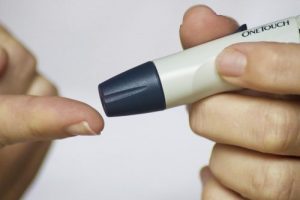- Home
- Editorial
- News
- Practice Guidelines
- Anesthesiology Guidelines
- Cancer Guidelines
- Cardiac Sciences Guidelines
- Critical Care Guidelines
- Dentistry Guidelines
- Dermatology Guidelines
- Diabetes and Endo Guidelines
- Diagnostics Guidelines
- ENT Guidelines
- Featured Practice Guidelines
- Gastroenterology Guidelines
- Geriatrics Guidelines
- Medicine Guidelines
- Nephrology Guidelines
- Neurosciences Guidelines
- Obs and Gynae Guidelines
- Ophthalmology Guidelines
- Orthopaedics Guidelines
- Paediatrics Guidelines
- Psychiatry Guidelines
- Pulmonology Guidelines
- Radiology Guidelines
- Surgery Guidelines
- Urology Guidelines
Breakthrough technique regulates insulin release through blue light

USA: A new technique discovered by researchers from Tufts University in Massachusetts could be beneficial for people with type 2 diabetes to regulate their blood sugar levels. The researchers have transplanted insulin-producing beta cells into the skin of mice with diabetes -- allowing for the blue light to better reach the cells. The highlight of this transplant is that the transferred beta cells can be switched on and off by blue light. The mice into which the cells were transferred had been treated with streptozotocin, a chemical that destroys beta cells.
The advantage of the blue light technique is that insulin-producing can be turned down when insulin is not needed. This could help to reduce hypoglycemia and unwanted weight gain which can be a feature of treatment with basal insulin.
The newly engineered cells increased insulin levels in the presence of higher glucose levels and but not in the presence of low glucose levels. This also led to improved glucose tolerance, lower hyperglycemia, and higher plasma insulin when subjected to illumination, the researchers reported. The cells could be controlled using blue light by using ‘optogenetics’ technology. The method involved genetically engineering the beta cells with a gene that codes for an enzyme that allows the beta cells to respond to blue light.
The enzyme the gene encodes is photoactivatable adenylate cyclase (PAC) and this produces the molecule cyclic adenosine monophosphate (cAMP) which activates calcium channels that are involved in the release of insulin by beta cells.
“The cells do the work of insulin production naturally and the regulatory circuits within them work the same; we just boost the amount of cAMP transiently in beta cells to get them to make more insulin only when it’s needed,” said Emmanuel Tzanakakis, professor of chemical and biological engineering at the School of Engineering at Tufts University and corresponding author of the study.
The transplantation would be beneficial for type 2 diabetes patients that have a reduced ability to produce sufficient insulin.
The technique would have more challenges for use in people with type 1 diabetes as the immune system, in people with type 1, would be able to attack and destroy the transplanted cells. Some research teams are working on ways to prevent the immune system from attacking transplanted beta cells.
More Information: "Amelioration of Diabetes in a Murine Model upon Transplantation of Pancreatic β-Cells with Optogenetic Control of Cyclic Adenosine Monophosphate" published in the ACS Synthetic Biology journal.
DOI: https://doi.org/10.1021/acssynbio.9b00262
Journal Information: ACS Synthetic Biology

Disclaimer: This site is primarily intended for healthcare professionals. Any content/information on this website does not replace the advice of medical and/or health professionals and should not be construed as medical/diagnostic advice/endorsement or prescription. Use of this site is subject to our terms of use, privacy policy, advertisement policy. © 2020 Minerva Medical Treatment Pvt Ltd